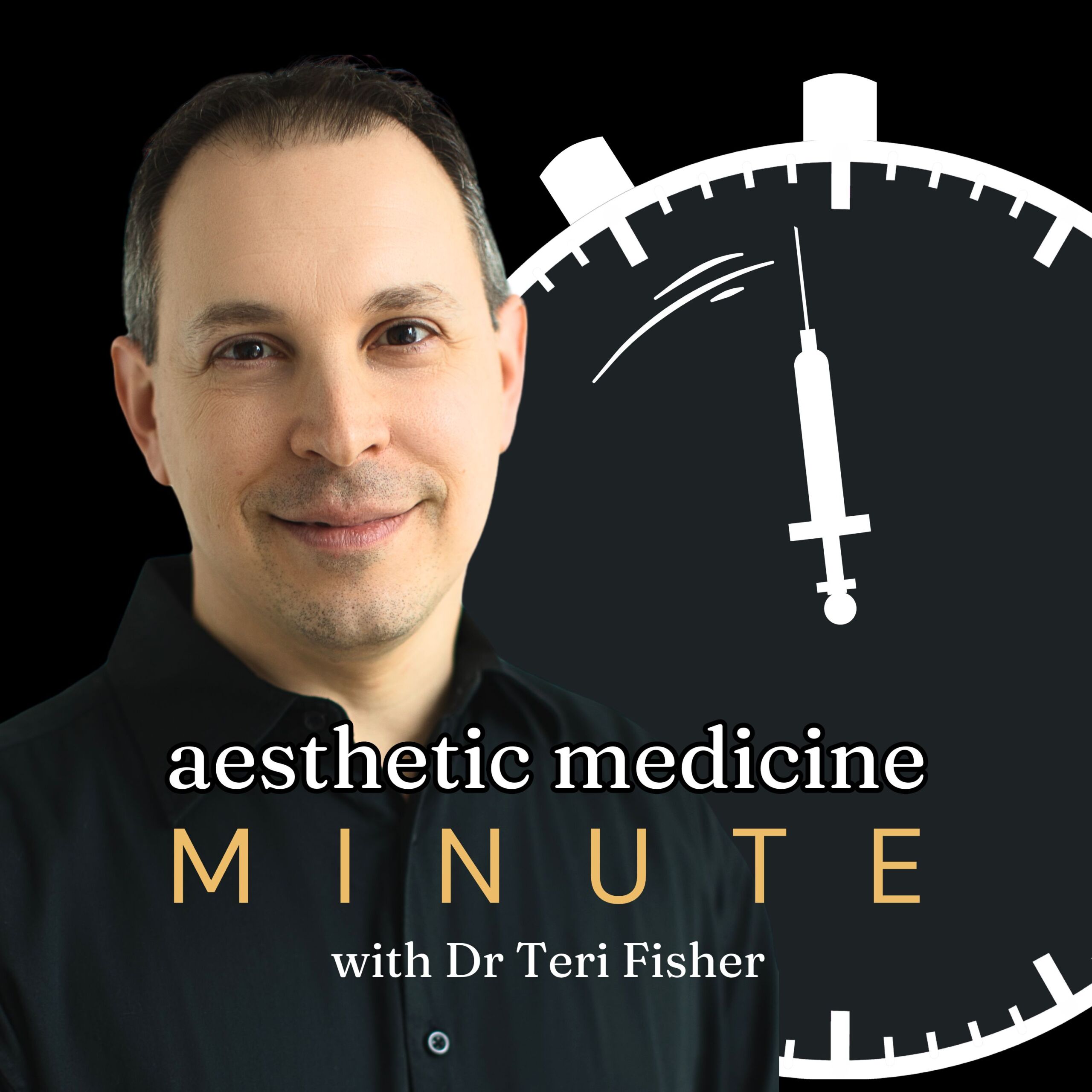
AMM 69: Post-Hyaluronidase Syndrome in Aesthetic Treatments
May 6, 2024
Explore the latest research on hyaluronidase and its implications in aesthetic treatments. Uncover the dosing strategies, potential side effects, and the newly identified ‘Posthyaluronidase Syndrome’ in this episode of “Aesthetic Medicine Minute.” Understand the importance of precise dosing for optimal outcomes and patient safety in non-surgical aesthetic procedures. Stay informed and confident in your practice with factual insights in the world of aesthetic medicine.
Quick Takes
- Study from PRS Global Open highlights ‘Posthyaluronidase Syndrome’
- Hyaluronidase is used to dissolve hyaluronic acid fillers but may cause side effects
- Precision in dosing is crucial to minimize risks and optimize patient outcomes
Episode Transcript
Welcome to “Aesthetic Medicine Minute.” Today is May 6th and the focus is on a remarkable piece of research drawing attention in our field, concerning the use of hyaluronidase in aesthetic treatments. A study from PRS Global Open put the spotlight on what is being termed the ‘Posthyaluronidase Syndrome.’
For those unfamiliar, hyaluronidase is an enzyme often used to dissolve hyaluronic acid fillers during non-surgical procedures. While it’s a handy tool for correcting filler complications, its use isn’t without concerns. The study in question provides invaluable insights into dosing strategies and potential side effects associated with its use.
Researchers have identified a range of symptoms, from puffiness to discomfort, that sometimes arise post-application, a condition now named ‘Posthyaluronidase Syndrome.’ This syndrome is key to understanding because the symptoms can mimic those of an allergic reaction, yet they’re actually a response to the enzyme’s action on hyaluronic acid.
The research emphasizes the importance of precision in dosing; not just to ensure effectiveness, but to minimize the risk of these unwanted symptoms. As a professional in non-surgical aesthetic medicine, it’s critical that we stay informed on such developments to optimize patient outcomes and safety.
Today’s discussion pulls from scientific evidence to understand the delicate balance needed when using hyaluronidase. As always, the aim is to maintain a high standard of care, ensuring our clients continue to receive safe, effective treatments synonymous with ‘Sculpted Confidence.’
That’s all for this edition of “Aesthetic Medicine Minute,” keeping you at the forefront of the aesthetic medicine field with concise, fact-driven updates. Stay informed, stay confident.
Welcome to the Aesthetic Medicine Minute. Today is May 7th, 2024.
In a recent development within the field of aesthetic medicine, a preliminary report was published, proposing an intriguing advancement in treating complications from hyaluronic acid fillers. Dr. Urso Simone Ugo, Dr. Molinari Paola, Dr. Fundarò Salvatore, and Dr. Giovanni Mosti – all aesthetic doctors and plastic surgeons from Italy – have presented their findings on the use of minimal amounts of hyaluronidase for the treatment of acute vascular occlusion caused by hyaluronic acid fillers.
These complications, while rare, can be quite distressing. Traditional approaches often involve high doses of hyaluronidase, which carry the risk of significant local and general side effects. What the study indicates, however, is that when the origin of the complication is precisely identified via ultrasound guidance, only a small number of hyaluronidase units are required to treat it effectively.
The research presented five cases of young female patients with vascular lesions stemming from recent HA filler injections. These lesions, accurately identified by ultrasound, were treated with a dose of 87 ± 44 IU of hyaluronidase. The results were promising, with the four promptly treated patients making a full recovery, and the fifth showing marked improvement. Importantly, there were no reported side effects from this reduced hyaluronidase dosage.
This study, published on April 23rd, in the Aesthetic Surgery Journal Open Forum, underscores the potential to minimize the dosage of hyaluronidase without compromising efficacy, reducing the likelihood of side effects. It supports a precise, ultrasound-guided approach that is not only more effective but also safer for our patients, fitting neatly with our ethos of ‘Sculpted Confidence’.
That’s all for today’s Aesthetic Medicine Minute. This has been a glimpse into what’s moving and shaking in the world of aesthetic medicine. Remember, it’s all about enhancing beauty with scientific precision and care. Until next time.
